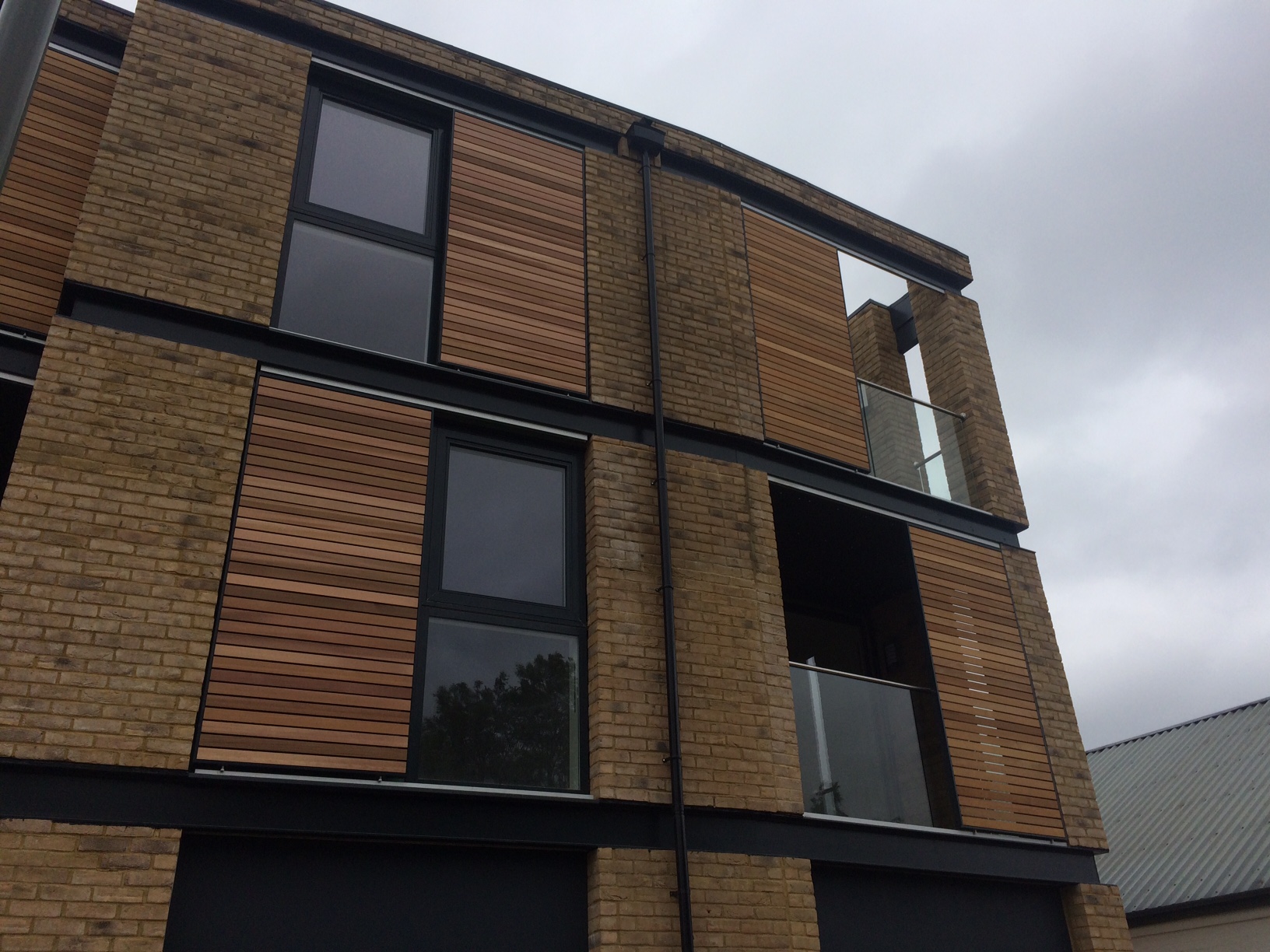Exterior shutters

Exterior shading systems have often been overlooked because of the initial higher cost, the aesthetic appearance may not fit well with older design principles, or unfamiliarity by the architects and designers with alternative solutions. However, if function were the leading criterion for making the decision about how to control the harmful effects of the sun, exterior shading systems might be more common.
The advantage of an exterior shutters or screens is that they reflect and absorbs solar energy outside the house… before it hits the windows. They can absorb, reflect and re-emit up to 95% of the total solar radiance while only 5% is admitted into the interior space. To help operate exterior shutters or screens, fully-motorised sliding and folding track solutions are available, as well as motorised louvre solutions, all fully-programmable.
The benefit of motorised solutions is that the user can control the entry of heat and light at the touch of a button, especially practical for exterior solutions where weather conditions may be poor, or for fixed glass installations where access might be an issue. Additionally, it is possible to programme shutters/louvres to open at pre-determined times of the day – a benefit for both heat/light control and security.
It is possible to design bespoke screens/shutters that will allow maximum heat gain in the winter months and reduce internal temperatures during the summer months. Some structures with large expanses of glass have reported lowering air conditioning cost by over 50%.
--GSSLTD
[edit] Related articles
- BREEAM Visual comfort Glare control.
- Brise soleil.
- Control of solar shading IP 4 17.
- Daylight lighting systems.
- Glare.
- Retrofitting solar shading.
- Shutter.
- Solar gain.
- Solar shading.
- Solar shading of buildings BR 364.
- Solar thermal panels.
- The daylight factor.
- Thermal comfort.
- Urban heat island effect.
- Wind Resistance for External Blinds.
Featured articles and news
RTPI leader to become new CIOB Chief Executive Officer
Dr Victoria Hills MRTPI, FICE to take over after Caroline Gumble’s departure.
Social and affordable housing, a long term plan for delivery
The “Delivering a Decade of Renewal for Social and Affordable Housing” strategy sets out future path.
A change to adoptive architecture
Effects of global weather warming on architectural detailing, material choice and human interaction.
The proposed publicly owned and backed subsidiary of Homes England, to facilitate new homes.
How big is the problem and what can we do to mitigate the effects?
Overheating guidance and tools for building designers
A number of cool guides to help with the heat.
The UK's Modern Industrial Strategy: A 10 year plan
Previous consultation criticism, current key elements and general support with some persisting reservations.
Building Safety Regulator reforms
New roles, new staff and a new fast track service pave the way for a single construction regulator.
Architectural Technologist CPDs and Communications
CIAT CPD… and how you can do it!
Cooling centres and cool spaces
Managing extreme heat in cities by directing the public to places for heat stress relief and water sources.
Winter gardens: A brief history and warm variations
Extending the season with glass in different forms and terms.
Restoring Great Yarmouth's Winter Gardens
Transforming one of the least sustainable constructions imaginable.
Construction Skills Mission Board launch sector drive
Newly formed government and industry collaboration set strategy for recruiting an additional 100,000 construction workers a year.
New Architects Code comes into effect in September 2025
ARB Architects Code of Conduct and Practice available with ongoing consultation regarding guidance.
Welsh Skills Body (Medr) launches ambitious plan
The new skills body brings together funding and regulation of tertiary education and research for the devolved nation.
Paul Gandy FCIOB announced as next CIOB President
Former Tilbury Douglas CEO takes helm.
UK Infrastructure: A 10 Year Strategy. In brief with reactions
With the National Infrastructure and Service Transformation Authority (NISTA).






















